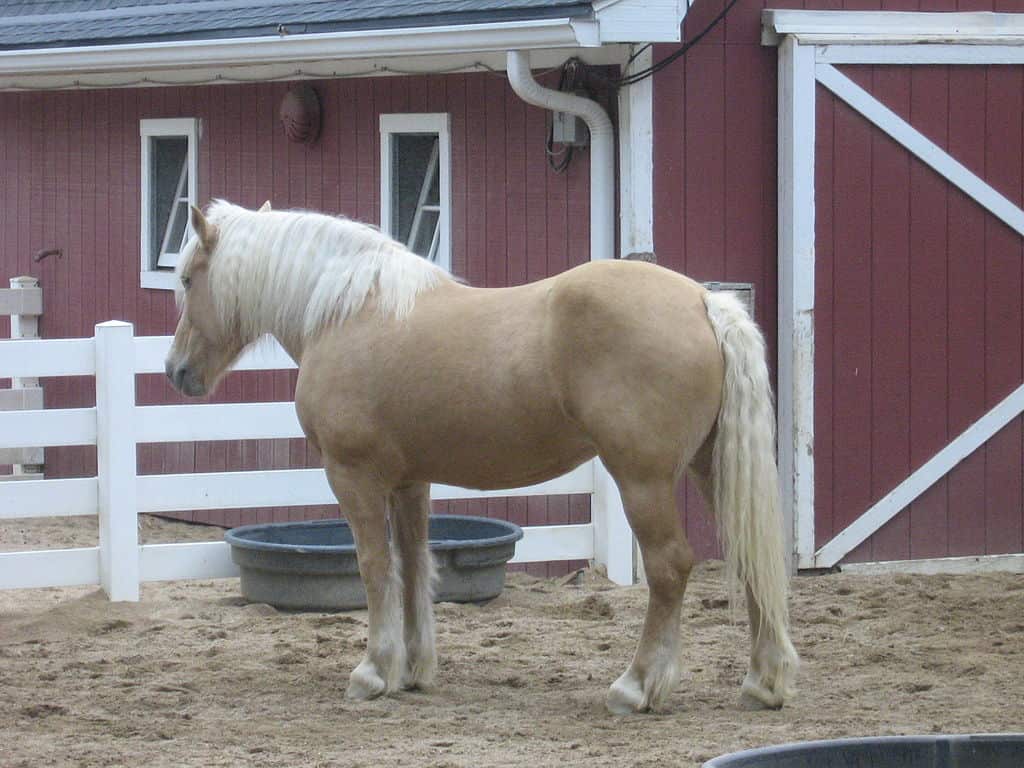Horses have played an important role throughout human history and still do to this day. While many horse breeds, such as the Thoroughbred and the Arabian horses, are famous worldwide, there are many others that are rarer that you have not heard of. In this article, we will take a closer look at these more uncommon horse breeds and learn about their appearance, history, and importance to the equine world.
Here are the 20 rarest horse breeds in the world today. But first, let’s define what it means for a horse breed to be rare.
Definition of Rarity
The rarity of specific breeds of horses is determined when their population is significantly lower than more recognized breeds. Furthermore, the distribution of a particular breed can also make them rare. For example, horses that are limited to certain regions of the world may not be as well known or readily available. It’s important to note that while rarity alone does not always mean superiority, in some cases, these breeds will have distinct and sought-after characteristics and traits.
Akhal-Teke

The metallic sheen of the Akhal-Teke’s coat gives this horse the name “golden horse”.
©iStock.com/olgaIT
Akhal-Teke is a horse breed that is originally from Turkmenistan. This beautiful horse has a famously shiny coat with a metallic sheen. The coat color can vary, with some of the most common colors being bay, black, chestnut, palomino, and gray. The beautiful metallic and shiny coat of the Akhal-Teke has given the breed the nickname “golden horse”. These horses are large and can grow between 14 and 16 hands tall. Interestingly, this breed was used for raiding by Turkmen due to its speed, endurance, and intelligence.
Friesian

From the Netherlands, the Friesian horse has a long flowing tail.
©Makarova Viktoria/Shutterstock.com
The Friesian horse has deep roots in the Friesland region of the Netherlands. Large muscles, tall postures, and a striking black coat give this breed of horse a very elegant appearance. This horse breed also has a very distinctive upright mane and a long flowing tail. Fresian horses can grow to be between 15 and 17 hands tall and are easy to train. Their history extends back to medieval times when they were used as war horses. They were also perfect for agricultural needs.
Appaloosa
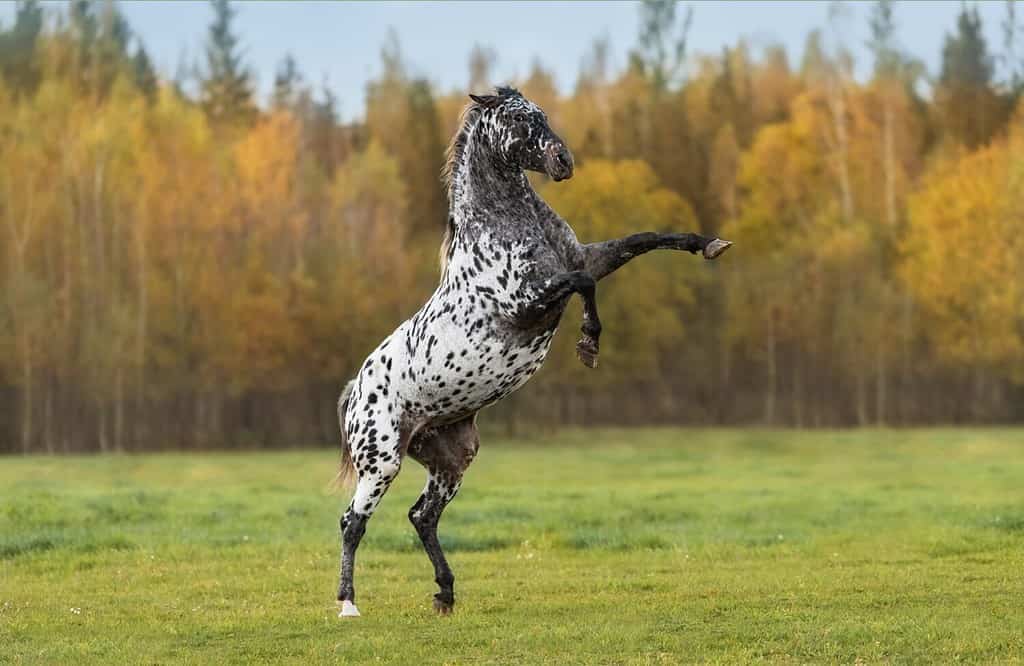
The spotted coat of the Appaloosa is distinctive.
©Rita_Kochmarjova/Shutterstock.com
The Appaloosa is a rare breed that is originally from the United States. It is relatively easy to distinguish this breed from other horses due to their spotted coat pattern, though not all Appaloosas have spots. Interestingly, the body type of the Appaloosa varies greatly because different horse breeds, such as the Arabian and Quarter horses, have influenced this breed’s development. The Appaloosa horse can grow between 14 and 16 hands tall.
Native Americans believed that the Appaloosa was a spiritual animal due to its spotted coat. In fact, their coats were a symbol of the beauty of the earth. Furthermore, the Appaloosa is a very intelligent and courageous horse breed that made it an ideal war horse in the past.
Cleveland Bay
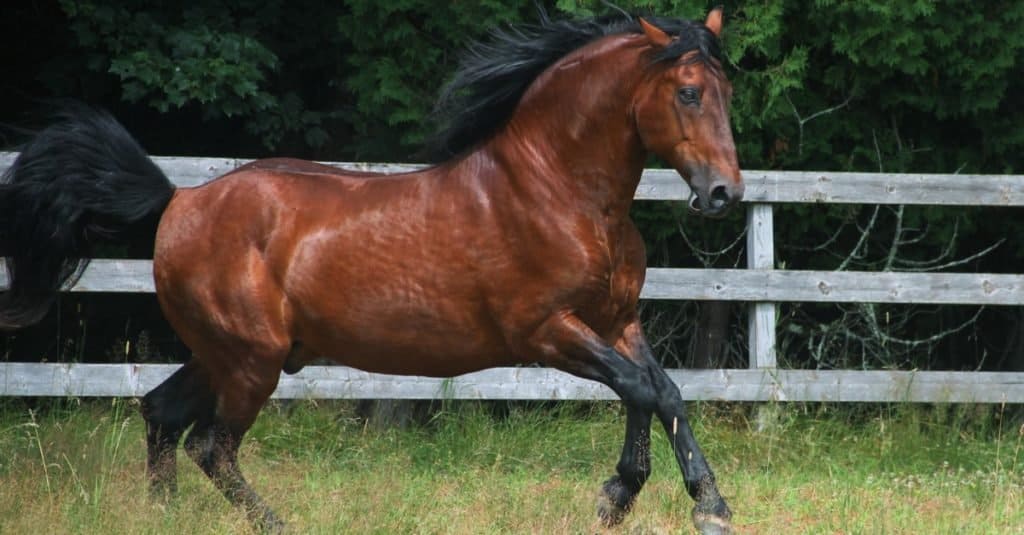
One of the rarest horse breeds, the Cleveland Bay originated in England.
©Liia Becker/Shutterstock.com
Originally from England, the Cleveland Bay is a horse breed with a history that dates all the way back to the 17th century. Standing between 16 and 17 hands tall, Cleveland Bay horses have distinctive bay-colored coats ranging from light to darker shades. These horses hold great historical and cultural significance as England’s oldest established horse breed. Historically, they were used for carriage driving as they are strong and reliable horses. The Cleveland Bay has a calm nature and a natural talent for jumping. Therefore, nowadays, many people use this breed for competitions and shows.
American Cream Draft
As its name suggests, the American Cream Draft is a beautiful horse originally from the United States, characterized by its gorgeous cream color coat. This horse breed can grow between 15 and 16.3 hands tall. American Cream Draft horses have a medium-heavy build and a calm temperament, making them a great choice for those new to handling draft horses.
Historically, this breed played a significant role in the development of agriculture and transportation. Nowadays, these horses make great family companions as they are people-oriented, docile, and trustworthy.
Caspian

A small horse, the Caspian can pull carts.
©MAVRITSINA IRINA/Shutterstock.com
The Caspian is a horse breed that originated from Iran. It is a relatively small horse, standing at around 11.3 hands tall, and is tough, athletic, and nimble. This hardy horse has really strong hooves that rarely need shoeing. The Caspian horse comes in a wide range of colors, including bay, chestnut, and black.
Caspian horses are mainly used to pull carriages and carts, which makes them popular for single driving competitions! Plus, don’t let the size of the Caspian fool you. These horses have surprisingly great speed and agility.
Fjord
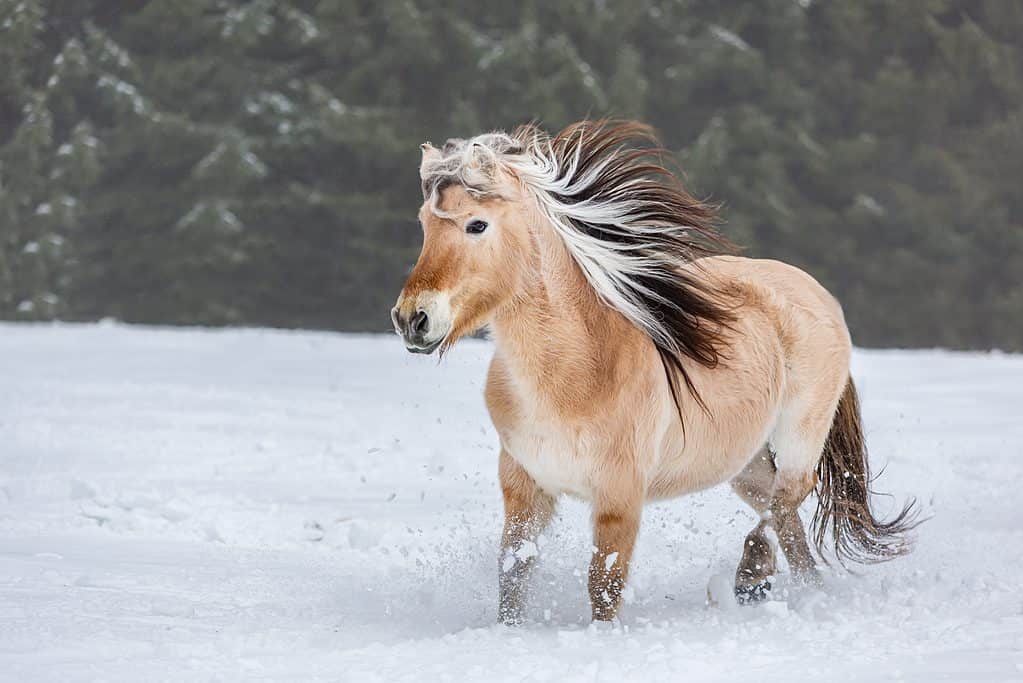
The Norwegian Fjord horse has a thick coat to protect it from the cold climate.
©Annabell Gsoedl/Shutterstock.com
The Fjord horse originates in Norway and has a compact and sturdy body. This horse breed has a dun-colored body with a distinctive black stripe that runs down its back from mane to tail. Fjord horses are between around 13 and 14 hands tall and have impressive strength. They are well-suited to the mountainous terrain of the region, and their thick coats keep them warm in the cold climate. Historically, these horses have a rich farming history, and Vikings used them as war horses once upon a time.
Galiceno
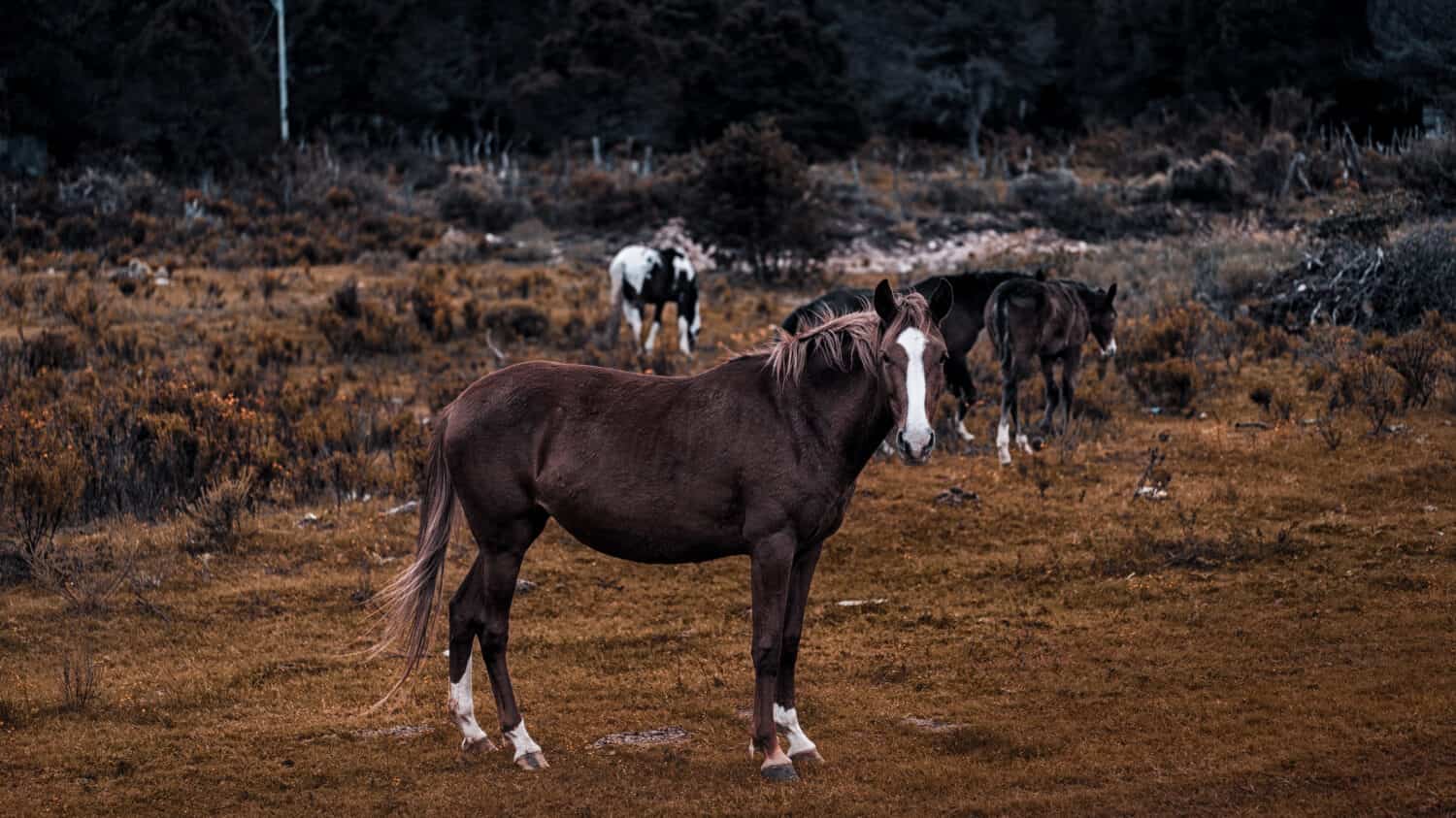
Although a small horse, the Galiceno has great endurance and stamina.
©ooo.photography/Shutterstock.com
The Galiceno is a horse breed that originated in Mexico. Although small, the Galiceno is still a horse rather than a pony. This horse breed stands between 12 and 13.2 hands tall. These horses are generally bay, black, or chestnut in color.
Galiceno horses were used for ranch work due to their endurance and stamina. In modern times, they are also great for competitions due to their agility and intelligence. Plus, they are really easy to train.
Knabstrupper

An athletic horse, the Knabstrupper can have a solid or spotted coat.
©iStock.com/huettenhoelscher
The Knabstrupper, also known as Knabsteup, is originally from Denmark. This horse breed usually stands between 15.2 and 16 hands tall. Interestingly, coat patterns for this beautiful horse range from solid to a full leopard-spotted coat. Although an athletic horse, the Knabstrupper also has a very kind and easy temperament.
This horse is mainly used as a riding horse but can also be used as a harness horse and even in circuses. The Knabstrupper is also a perfect circus horse, as it likes people, likes to work, and is willing to please.
Canadian
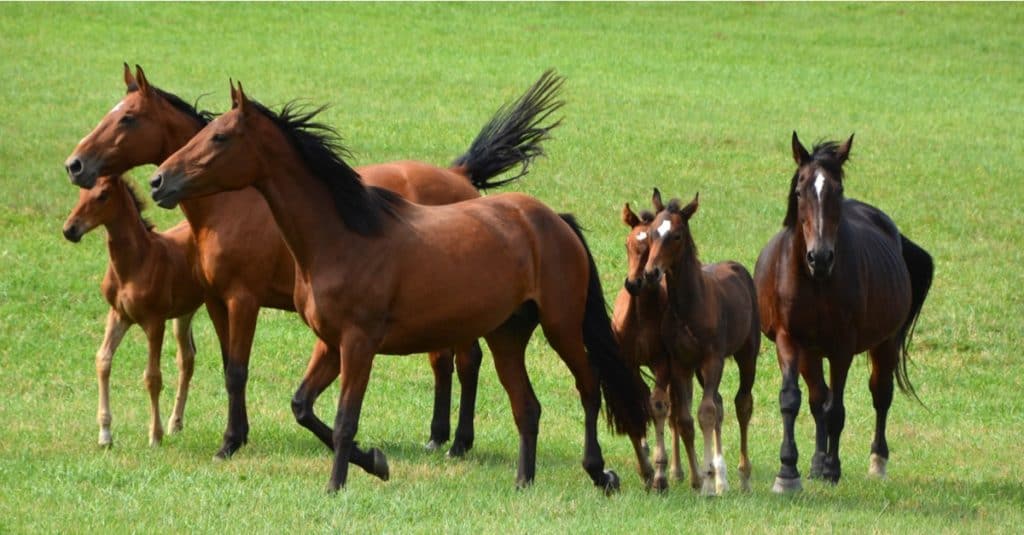
Canadian horses come in many colors, including black and brown.
©meunierd/Shutterstock.com
As the name suggests, the Canadian horse is originally from Canada. This horse is generally between 14 and 16.2 hands tall and is generally black, bay, or brown in color. The Canadian horse is notably gorgeous and beautiful, thanks to its long, wavy mane and glossy coat. Almost as it is showing off its beauty, this hardy horse has a flashy trot too! But don’t be fooled by their seemingly snooty behavior. Canadian horses are actually calm and relaxed, and they love people.
Today, Canadian horses are used for riding and driving, and they are even known for their jumping abilities. Their strength and agility mean they are seen in competition, draft work, and stock work.
Falabella
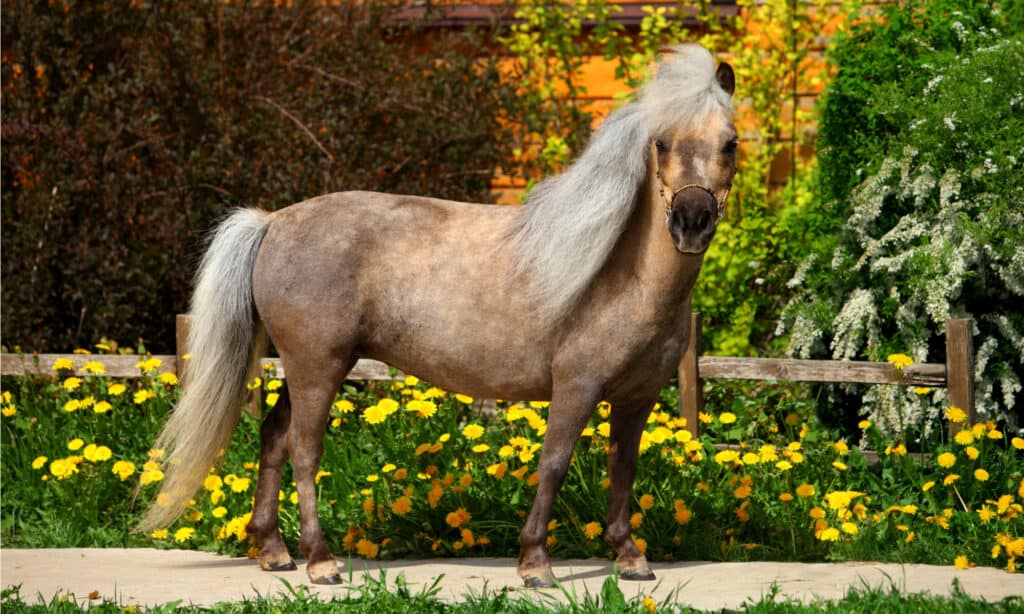
A small horse, the Falabella is only 6.1 to 8.2 hands tall.
©horsemen/Shutterstock.com
The Falabella is a small horse breed that is originally from Argentina. This horse is only 6.1 to 8.2 hands tall and have a short and compact body, making it one of the smallest horse breeds in the world! The Falabella comes in various colors, but the most common colors you’ll see are bay and black. Plus, some Falabella horses have spotted pattens.
There are many uses for Falabella horses. These horses can be used as therapy horses, guide animals, and for showing. Thanks to the Falabella’s gentle and docile nature, this horse breed can also be used as a mount for small children.
Dales Pony
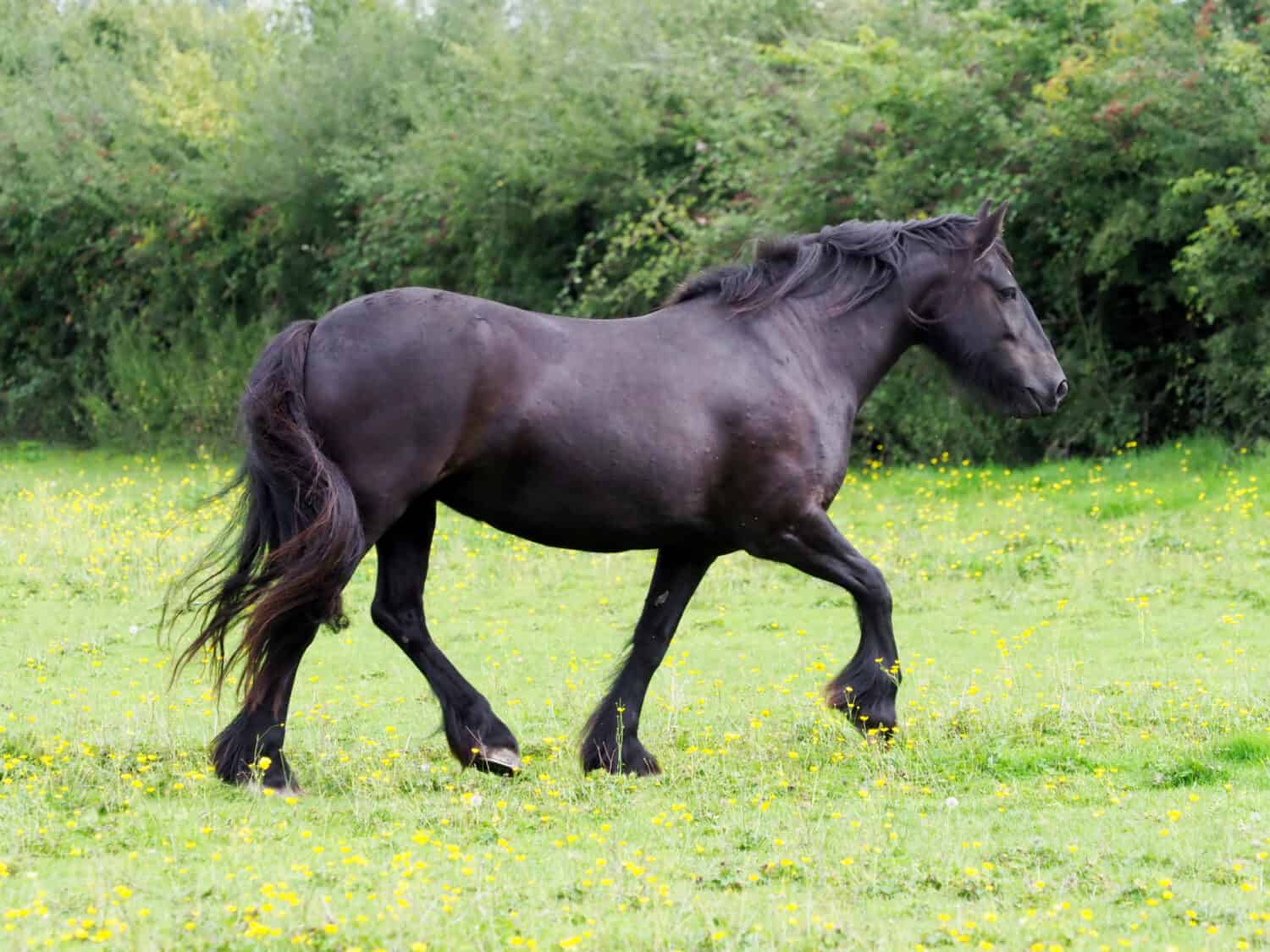
A hardy and muscular horse, the Dales pony is only 14 hands tall.
©nigel baker photography/Shutterstock.com
The Dales pony is a small horse breed originally from the United Kingdom. The ideal Dales pony is between 14 and 14.2 hands tall. This horse breed is incredibly hardy and muscular and can come in various colors, including black, brown, bay, grey, and roan. The Dales pony has a calm and sensible nature.
Historically, the Dales pony was originally a working pony due to its strength, hardiness, stamina, courage, and fast trot. However, these horses can also be used for competing, endurance riding, and pony-trekking.
Highland Pony
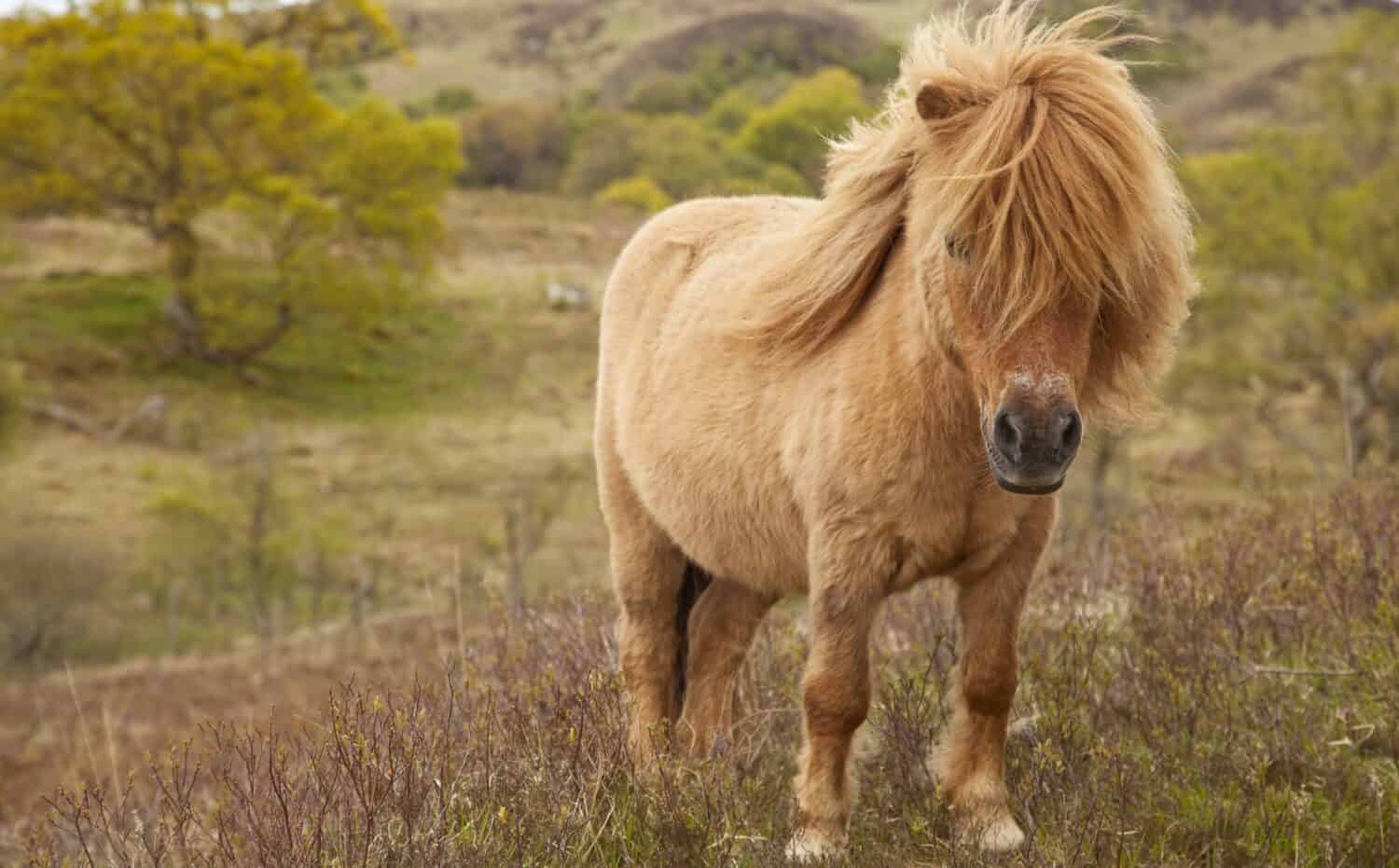
Coming in a range of dun shades, the Highland pony is native to Scotland.
©oceanwhisper/Shutterstock.com
The Highland pony is native to Scotland and is one of the largest pony breeds of the British Isles, standing between 13 and 14.2 hands tall. This horse comes in a variety of dun shades like mouse, yellow, cream, and grey. The Highland pony is very hardy and has adapted to variable and severe climatic and environmental conditions.
Highland ponies were once used for work but are now used for driving, trekking, and riding. These horses are calm, friendly, and patient in nature. But they do like to keep busy as they were used as working horses in the past.
Hackney

Originally from England, the Hackney is one of the rarest horse breeds.
©aleigha blakley/Shutterstock.com
The Hackney is a horse breed originally from England. This horse generally stands between 14.2 and 16.2 hands tall and can come in various colors, such as bay, brown, chestnut, or black. Hackney horses have a unique high-stepping trot, which is quite elegant, making them ideal for carriage driving. Although this horse breed is docile and easily trained, thanks to its endurance and tenacity, it’s worth noting that the Hackney is also quite sensitive.
Sorraia
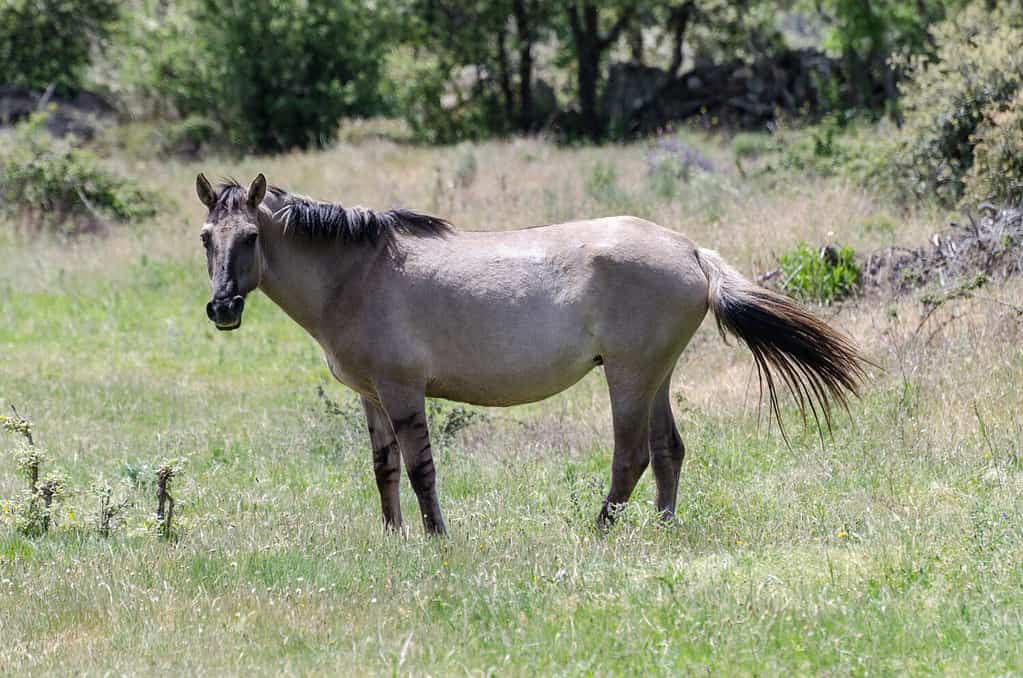
Indigenous to Portugal, the Sorraia is generally dun in color.
©David Wieczorek/Shutterstock.com
Another one of the rarest horse breeds in the world, the Sorraia is indigenous to Portugal. This breed is lean and leggy and can grow between 14.1 and 14.3 hands tall. The Sorraia is generally a dun or dun variation in color. This horse breed is very versatile and has been used for herding, riding, and harnessing. Interestingly, the Sorraia played a role in the development of some American breeds, such as the Mustang, through breeding.
Suffolk Punch
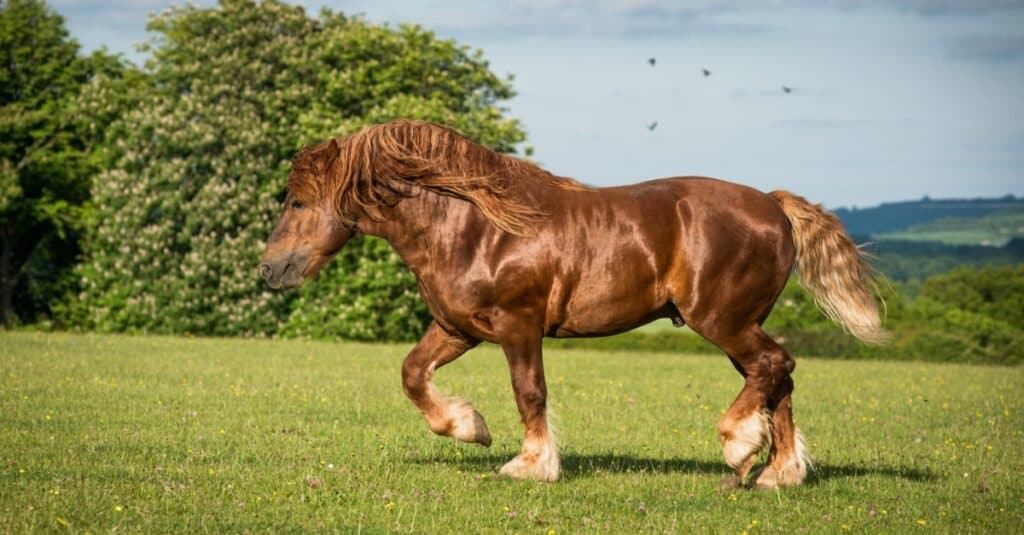
Also called the Suffolk Sorrel, the Suffolk Punch is always chestnut in color.
©Nicole Ciscato/Shutterstock.com
The Suffolk Punch is a horse breed originally from England. This beautiful horse stands between 16.1 and 17.2 hands tall and is always chestnut in color. There are seven recognized shades of chestnut, which range from bright to dark liver. Notably, the Suffolk Punch has an energetic gait.
The Suffolk Punch is heavy-built, so this horse is perfect for use on farms for draught work. As a hard worker, this horse breed was also used to pull heavy artillery in times of war. Unfortunately, the Suffolk Punch is a critically endangered breed today, with only a tiny population remaining.
Exmoor Pony

The Exmoor pony has a shaggy coat.
©Wildpix productions/Shutterstock.com
Native to the Exmoor region of England, the Exmoor pony stands around 12 hands tall. This horse has a distinctive shaggy coat in the winter to protect them from the cold and a muscular build. Thought to have roamed the Exmoor region for thousands of years, the Exmoor pony holds a deep historical significance to the area. Furthermore, this horse breed is well known for its stamina and endurance and is often used in activities like driving or endurance racing.
Camargue

An ancient breed, the Camargue horse is always gray in color.
©ODIN Daniel/Shutterstock.com
The Camargue horse is an ancient breed that is indigenous to France. In fact, this horse breed is one of the oldest breeds in the world. The Camargue horse is always gray in color and is a small horse that stands between 13.1 and 14.3 hands tall. This horse has even temperament, hardiness, bravery, and agility. Traditionally, the Camargue horse is used for cattle work. Notably, the Camargue horse is closely associated with the cultural heritage of the area and is an important symbol of the Camargue region.
Shire
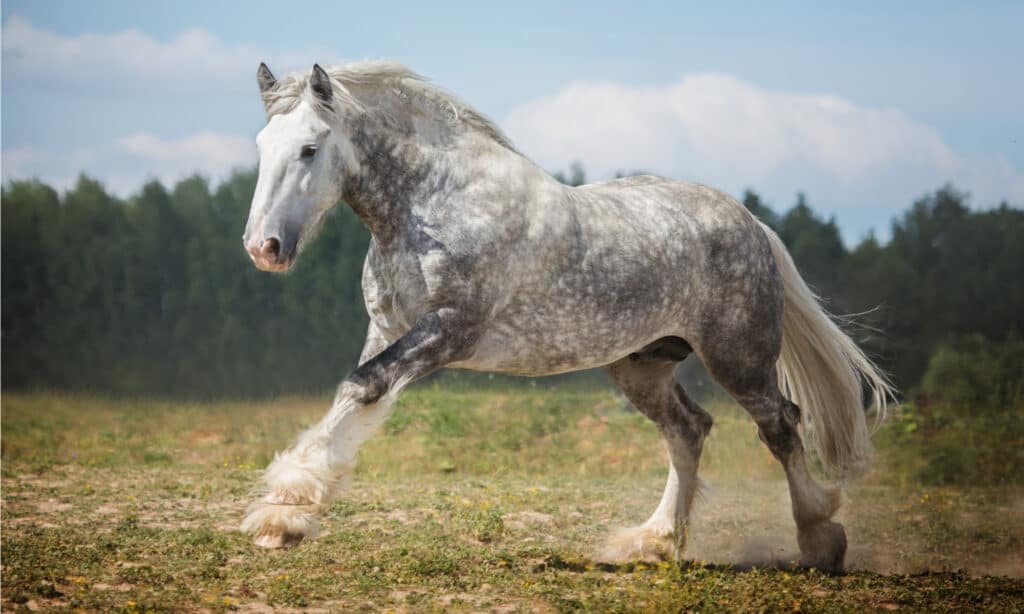
One of the largest horse breeds in the world, Shires are now a rare horse breed.
©Alla-L/Shutterstock.com
Shire horses are some of the largest horse breeds in the world, having held records for both the largest and tallest horse. They are originally from England, where they were historically used as powerful working horses, playing a prominent role in agricultural and transport uses. These horses stand up to 17 hands tall and have distinctive feathering on their lower legs. In terms of personality, Shire horses have a calm and gentle nature, making them perfect horses for equestrian activities, including riding, driving, and even therapy work.
Newfoundland Pony
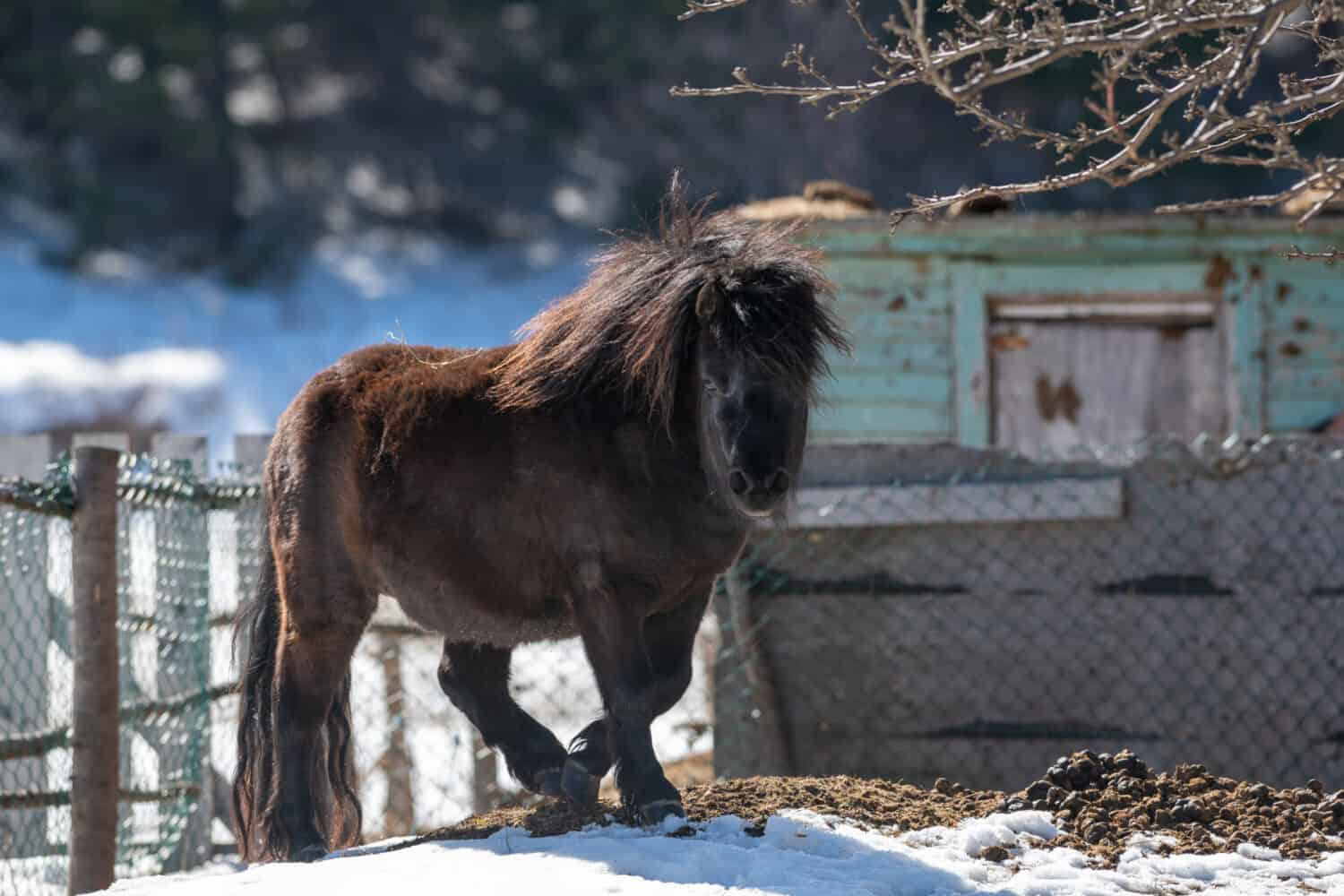
The
Newfoundland
pony is generally black, bay, or brown in color.
©Dolores M. Harvey/Shutterstock.com
As its name suggests, the Newfoundland pony originated from Newfoundland, Canada. This pony is sturdy and muscular in build and stands between 11 and 14.2 hands tall. The coat of the Newfoundland pony is often black, bay, or brown in color. Furthermore, the Newfoundland pony is docile and social in nature.
These horses are great for riding and driving and even for show. And in the past, these horses were used for plowing, hauling, gathering, carrying, and transportation.
Summary of the Top 20 Rarest Horse Breeds
| Horse | Origin | Size |
|---|---|---|
| Akhal-Teke | Turkmenistan | 14 – 16 hands |
| Friesian | Friesland | 15 – 17 hands |
| Appaloosa | United States | 14 – 16 hands |
| Cleveland Bay | England | 16 – 17 hands |
| American Cream Draft | United States | 15 – 16.3 hands |
| Caspian | Iran | 11.3 hands |
| Fjord | Norway | 13 – 14 hands |
| Galiceno | Mexico | 12 – 13.2 hands |
| Knabstrupper | Denmark | 15.2 – 16 hands |
| Canadian | Canada | 14 – 16.2 hands |
| Falabella | Argentina | 6.1 to 8.2 hands |
| Dales Pony | United Kingdom | 14 – 14.2 hands |
| Highland Pony | Scotland | 13 – 14.2 hands |
| Hackney | Great Britain | 14.2 – 16.2 hands |
| Sorraia | Portugal | 14.1 – 14.3 hands |
| Suffolk Punch | England | 16.1 – 17.2 hands |
| Exmoor Pony | United Kingdom | 12 hands |
| Camargue | France | 13.1 – 14.3 hands |
| Shire | United Kingdom | Up to 17 hands |
| Newfoundland Pony | Newfoundland | 11 – 14.2 hands |
The photo featured at the top of this post is © Makarova Viktoria/Shutterstock.com
Thank you for reading! Have some feedback for us? Contact the AZ Animals editorial team.




